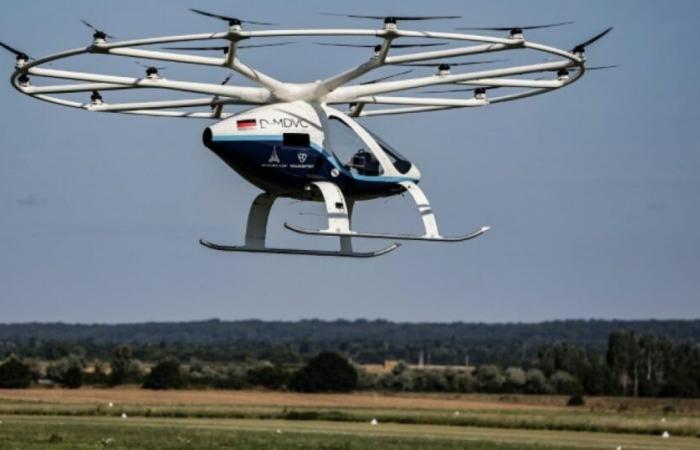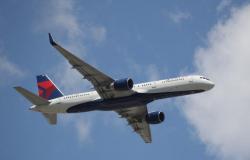After missing the boat at the Olympic Games for lack of a regulatory green light, the electric “flying taxis” supposed to be tested in Paris by the end of the year suffered a new setback on Friday with the announcement of the cancellation of a subsidy from the Ile-de-France region.
The president (LR) of the region, Valérie Pécresse, submitted to elected officials a project to withdraw this subsidy of one million euros granted a year ago to Groupe ADP, manager of Paris airports, to install a platform take-off and landing of these machines moored near Austerlitz, in the east of the capital, according to the text of the deliberation sent to AFP.
The decision does not a priori mean a death sentence: the platform has already been built and installed in the spring by ADP, which also earned 347 million euros in net profit in the first half. But it seems a bad omen after a series of setbacks over the past year for this controversial project.
“Following delays at various levels (delay in delivery of the vehicle's engines by an American supplier, lack of certification from the Directorate General of Civil Aviation and the European Aviation Safety Agency EASA), the experimentation could not take place under the conditions envisaged,” indicated Ms. Pécresse.
From the same source, ADP and its industrial partner, the German aircraft manufacturer Volocopter, initially hoped to carry out “1,000 general public flights over six months on a connection between Paris and the Issy-les-Moulineaux heliport” in the southwest of the capital.
According to Ms. Pécresse's office, the decision will be ratified on November 15. It does not call into question Île-de-France's support for innovation in general and for vertical take-off and landing machines (VTOL, their acronym in English) in particular, assured the executive.
It comes three months after the promoters of the project announced that they had given up on flying these aircraft during the Paris Olympic Games, an event which they hoped to showcase an innovative transport project.
The certification of the Volocity, the machine designed and manufactured by Volocopter, suffered a “lag of a few weeks” linked to vibrations on its engines, ADP then indicated, saying it hoped for flights when Notre-Dame Cathedral reopened. Lady of Paris, in December.
The Ministry of Transport, which authorized experiments from Austerlitz until December 31, did not wish to comment on Friday.
– Live in hosts –
“We are ready to be able to carry out an experiment in December, from the Austerlitz barge with our partner Volocopter,” ADP told AFP on Friday.
Judging for her part that the “experiment is abandoned” given the absence of certification and the withdrawal of the subsidy, the president of the Communist Left opposition group, environmentalist and citizen, Céline Malisé, saw it as “a considerable setback for Valérie Pécresse and the project leaders”.
“Our group has never stopped fighting this subsidy, the terms of which have never been respected by ADP,” added Ms. Malisé, quoted in a press release.
The project, discussed since the end of 2020, had already seen its ambitions revised downwards before the summer, Volocopter not having obtained EASA certification in time to accommodate paying passengers. The long-term goal is to demonstrate the feasibility of a new mode of transport in dense urban areas, by circulating these VTOLs between several “vertiports”.
In its current version, the two-seater aircraft, including that of the pilot, is equipped with batteries powering 18 rotors arranged in a ring above the cockpit, and is much quieter than a helicopter according to its manufacturer.
The Ministry of Transport and ADP have preferred to emphasize in recent months the usefulness of these machines – in future larger versions – for carrying out medical evacuations or transporting organs, rather than talking about “flying taxis” associated with a mode of travel for the richest.
While this project encountered hostility from municipal elected officials in Paris, from both the majority and the opposition, ADP defended it in the name of innovation in the face of intensifying foreign competition. In fact, at the end of October, the United States created the regulatory bases for the commercial exploitation of such machines.






